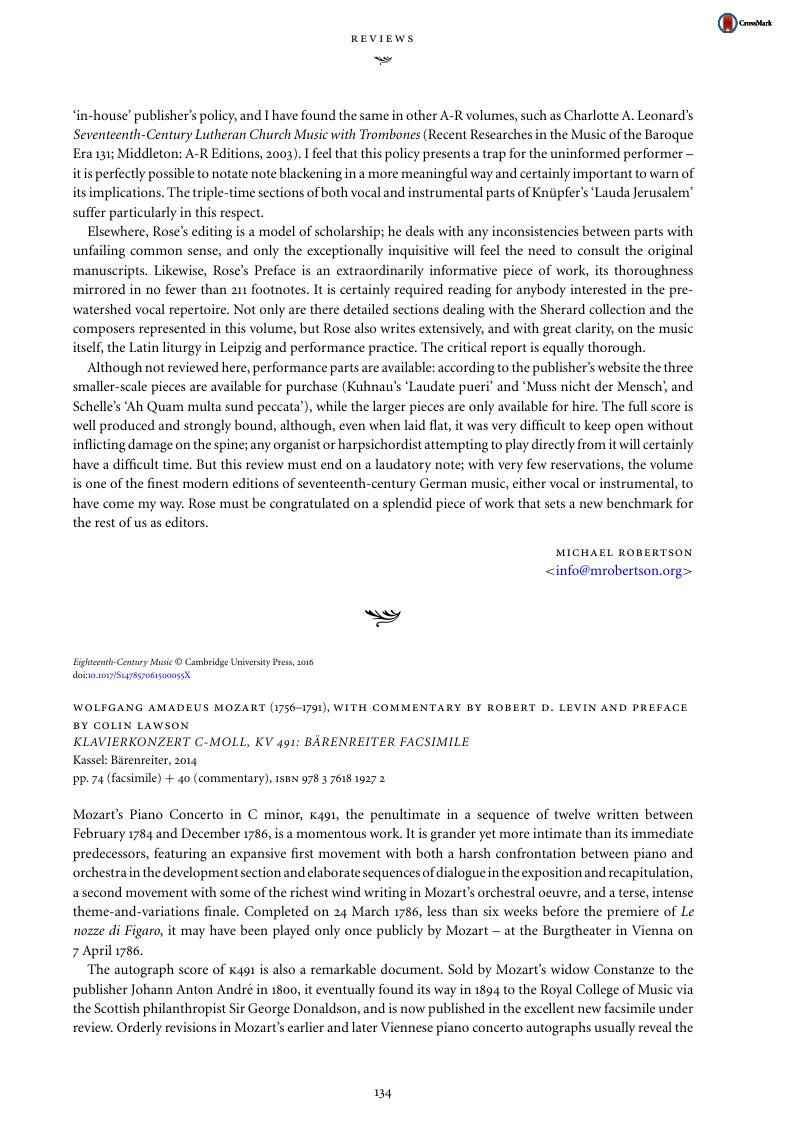No CrossRef data available.
Article contents
WOLFGANG AMADEUS MOZART (1756–1791), WITH COMMENTARY BY ROBERT D. LEVIN AND PREFACE BY COLIN LAWSON KLAVIERKONZERT C-MOLL, KV 491: BÄRENREITER FACSIMILE Kassel: Bärenreiter, 2014 pp. 74 (facsimile) + 40 (commentary), isbn 978 3 7618 1927 2
Published online by Cambridge University Press: 11 February 2016
Abstract
An abstract is not available for this content so a preview has been provided. Please use the Get access link above for information on how to access this content.

- Type
- Reviews: Editions
- Information
- Copyright
- Copyright © Cambridge University Press, 2016




